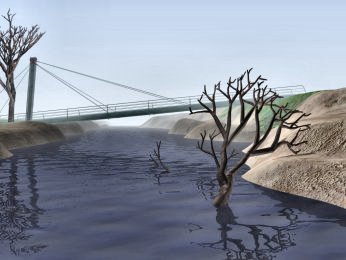This page gives an overview of the topics in the domain of computer graphics in which i have been mainly interested: realistic rendering, geometric modeling and graphtals / fractals.
My interest in computer graphics dates from quite a while ago, when i was writing small graphics demo's in MS GW-Basic, back in 1991. In 1997/1998 I had the chance to follow a computer graphics course at K.U.Leuven, as a part of my training in architectural engineering. The course was based on the "bible" of computer graphics "Computer Graphics : Principles and Practice", by Foley and van Dam. The course gave a good understanding on how 3D rendering works at low level. As an assignment for the course, I implemented a ray-casting program and a natural tree modeller. The difficulty of the project was in the provided graphics library, offering only primitive graphics entities such as pixels. A lot of the graphics algorithms and operations had to be implemented and optimised.
Originally, the graphtal based tree generator program was programmed in Pascal. Later on, I translated it to C++, making use of OpenGL for the 3D graphics, and Microsoft's MFC for the GUI.
The book "The Algorithmic Beauty of Plants (The Virtual Laboratory)" by Przemyslaw Prusinkiewicz, and Aristid Lindenmayer was a great source of inspiration to implement the tree program.
Screenshots Original Pascal Version (1998)
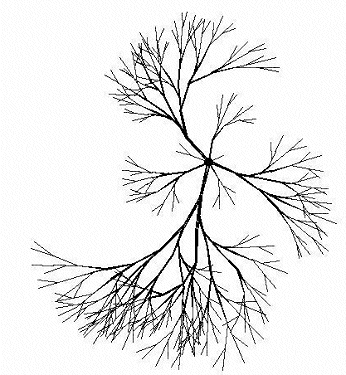
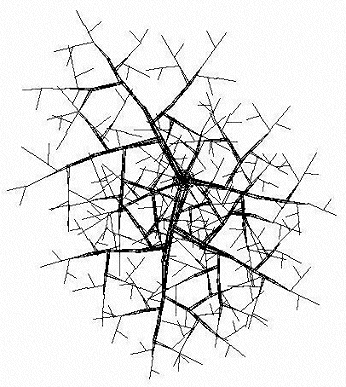
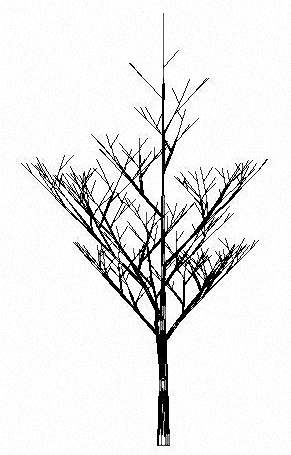
Screenshots OpenGL/MFC Version (2001)
In a later version of the program, trees can be directly manipulated with a slider and several buttons on the right hand side of the screen. Changes are displayed in real time, which makes the interface more intuitive. The level of detail, and the number of faces can be controlled easily.
Features that were realised with OpenGL are texture mapping, smooth shading, rotating, panning, and zooming of the rendered tree.
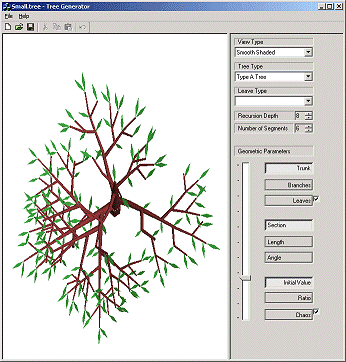
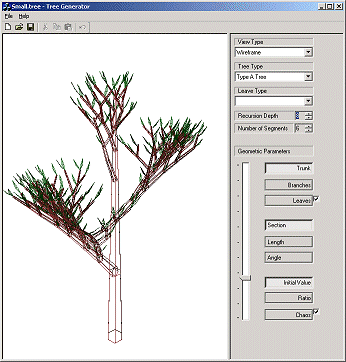
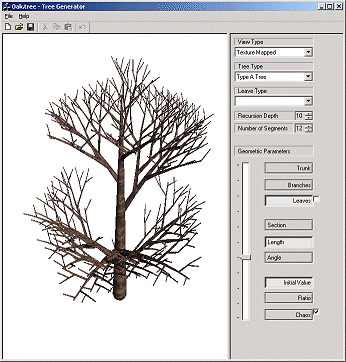

3DStudio Max Renderings (2001)
When the desired tree has been modeled, it can be converted to a DXF file for further usage in other 3d packages, such as 3DStudio Max.
To generate the terrain in the picture bellow, I developed a program to convert topological data into a smooth mesh.
